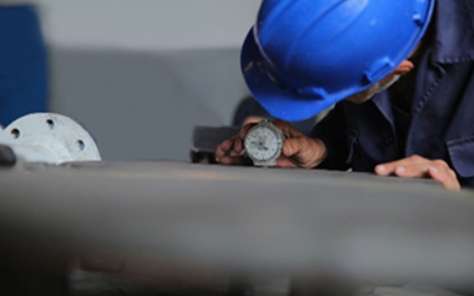
Inspection
Ensuring the longevity and optimal performance of your equipment requires a thorough examination of the entire lining. Key factors such as the appearance and durometer measurement of the rubber surface play a vital role in evaluating the lining’s condition. However, for a more comprehensive assessment and to confirm the absence of leaks, it is highly recommended to employ additional testing methods, with a spark tester being particularly effective.
Various techniques can be employed to assess the condition of the lining, encompassing:
- Visual inspection of the rubber surface
- Durometer measurement (hardness test) utilizing either a shore A or shore D test device in accordance with ASTM D standards
- Spark testing to identify non-visual pinholes, utilizing a holiday detector device following NACE guidelines
- Thickness testing
- Adhesion testing according to ASTM D standards
- Tensile strength and elongation testing, especially for soft rubber, following ASTM standards
- Hammer testing
- Additional testing, such as roughness testing during the blasting process, may be deemed necessary to ensure the service’s quality. The roughness should adhere to industry standards, ranging between SA 2.5 – SA 3. Regular and thorough assessments using these techniques contribute to the overall reliability and performance of the lined equipment.
